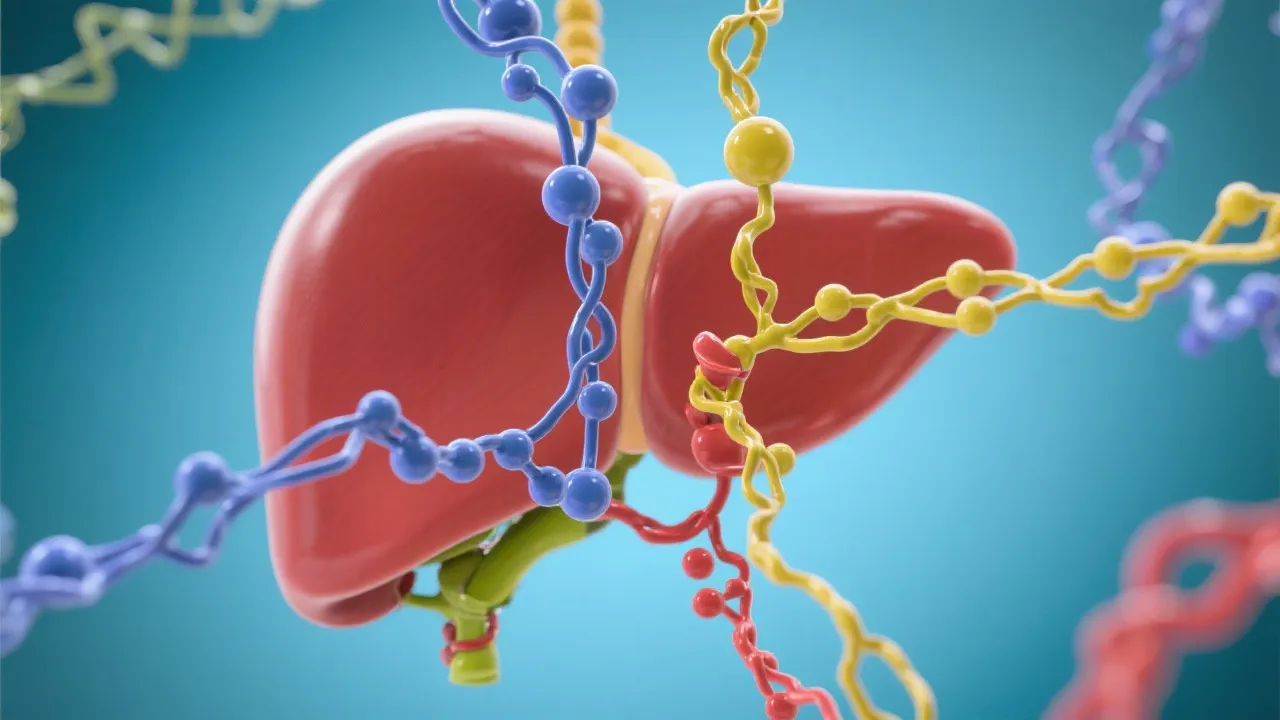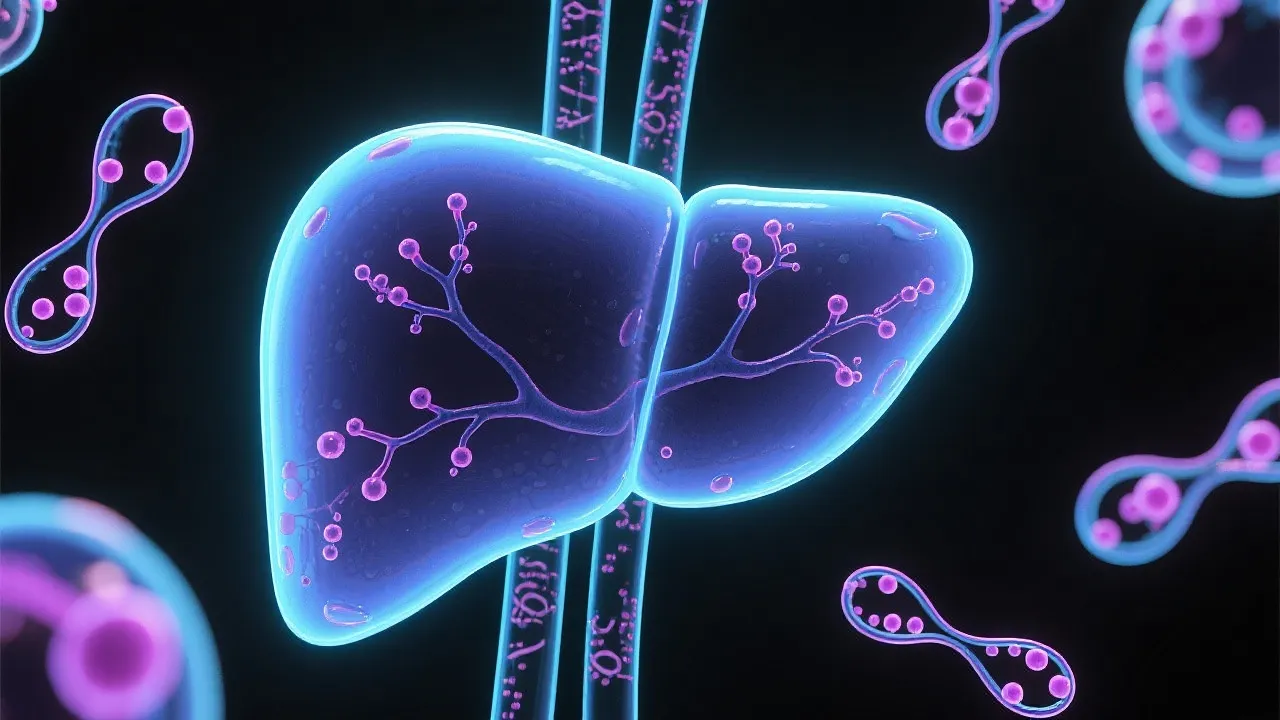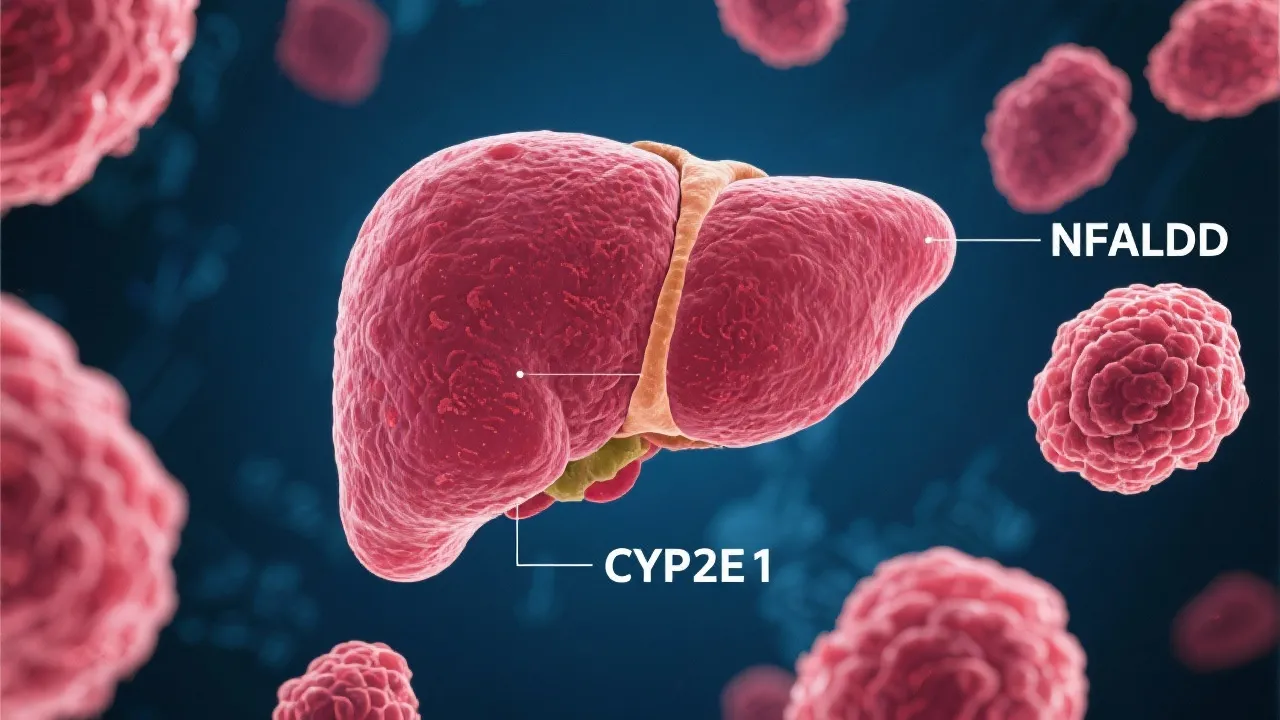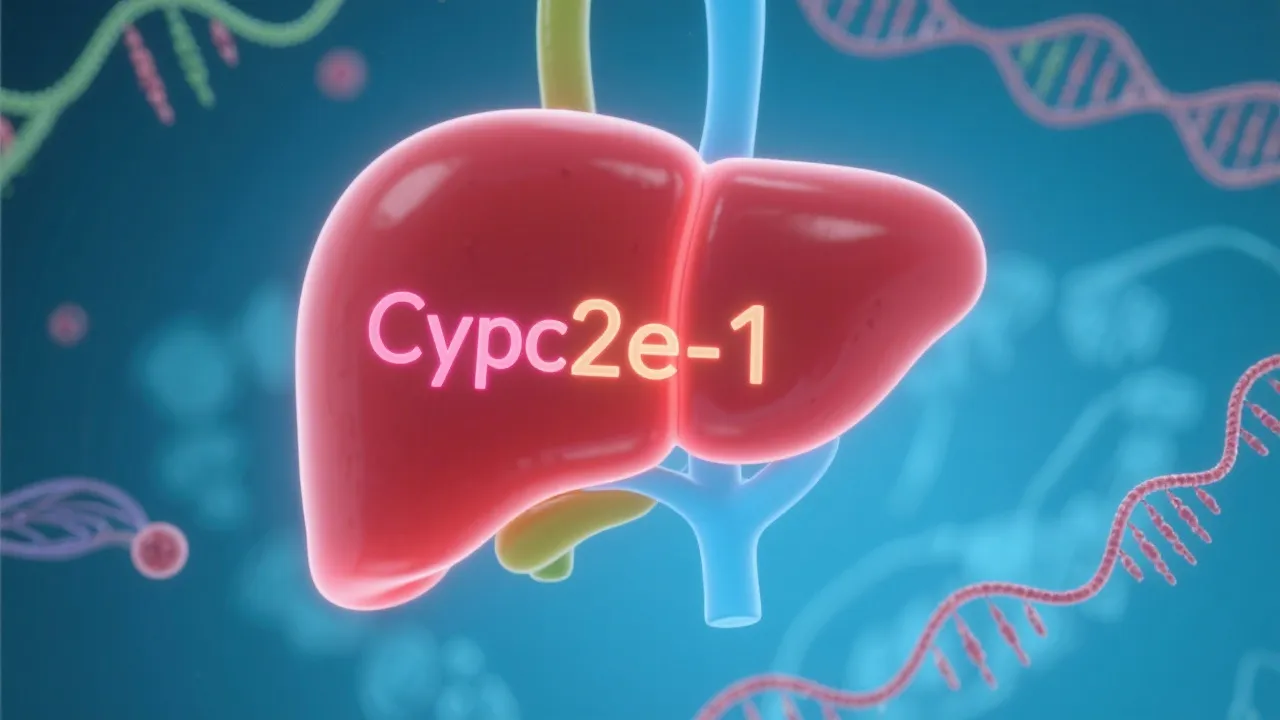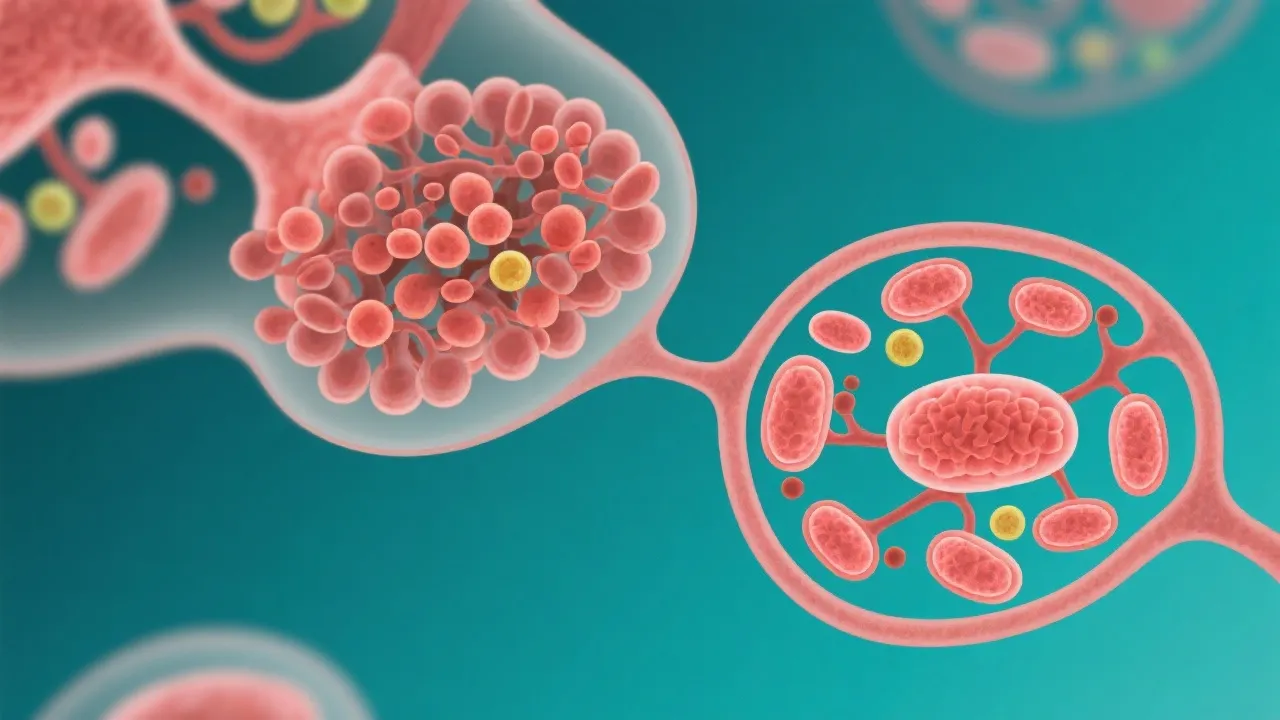The Interplay of Cyp2e1 and NAFLD
This article delves into the intricate relationship between Cyp2e1 and non-alcoholic fatty liver disease (NAFLD). Cyp2e1, a member of the cytochrome P450 family, is crucial in the metabolism of various substances in the liver. Its heightened activity is linked to the progression of NAFLD, necessitating a deeper understanding for developing therapeutic approaches. The following segments provide insights into this relationship, including current research findings.
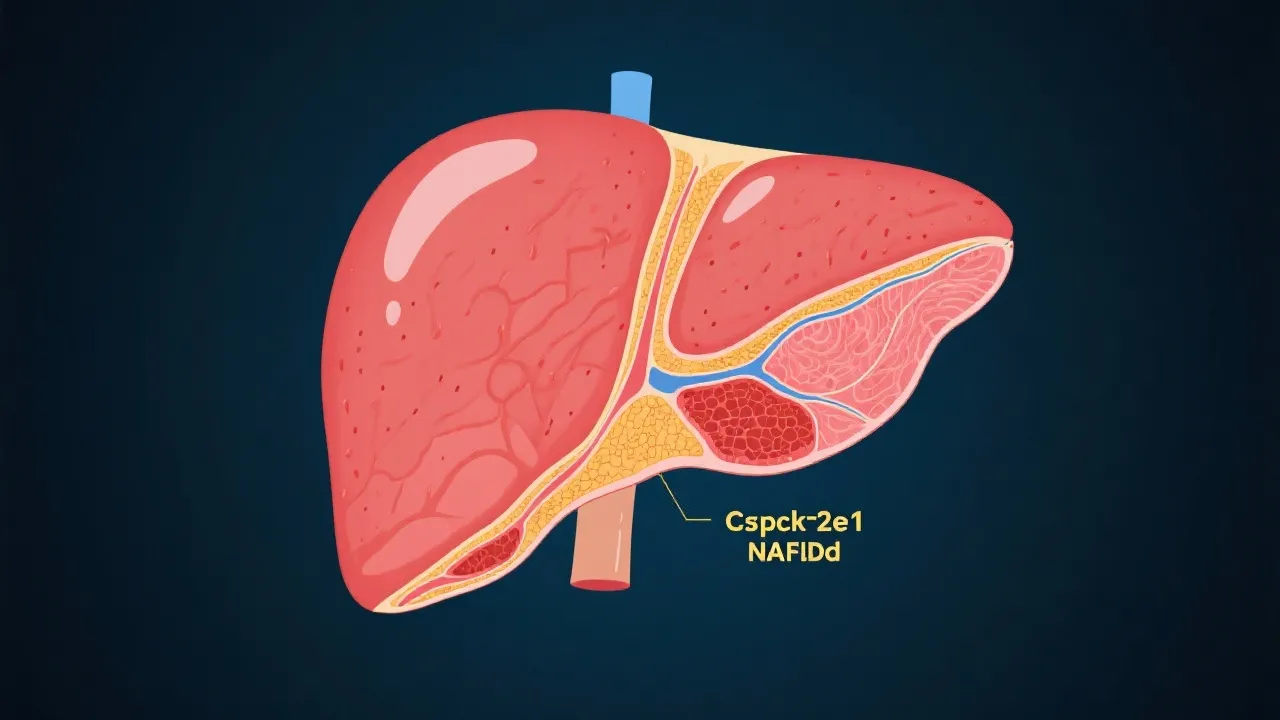
Understanding Non-Alcoholic Fatty Liver Disease (NAFLD)
Non-alcoholic fatty liver disease (NAFLD) is a prevalent liver condition characterized by excessive fat accumulation in the liver cells unrelated to alcohol consumption. It is a spectrum that ranges from simple steatosis or fatty liver to non-alcoholic steatohepatitis (NASH), which can progress to fibrosis, cirrhosis, and even liver cancer. NAFLD is becoming increasingly common worldwide, with its prevalence rising alongside obesity and type 2 diabetes—a global health crisis that demands attention. According to estimates, the prevalence of NAFLD in adults is around 25%, with higher rates observed among individuals with obesity and diabetes.
Despite its increasing prevalence, NAFLD often goes unnoticed until advanced liver damage occurs because it can be asymptomatic in its early stages. The pathology of NAFLD involves not just fat accumulation but also inflammatory processes within the liver. As researchers uncover more about this disease, it has become clear that numerous lifestyle factors, including poor diet high in saturated fats and sugars, physical inactivity, and metabolic syndrome, are significant contributors. Additionally, genetic and biochemical elements play pivotal roles in individual susceptibility to NAFLD. Understanding the underlying biology of the disease is crucial for developing effective treatments.
The Role of Cyp2e1 in Liver Function
Cyp2e1 is a member of the cytochrome P450 enzyme family, primarily found in the liver. It is involved in the metabolism of various substrates, such as alcohol and drugs, and the bioactivation of procarcinogens. Importantly, Cyp2e1 generates reactive oxygen species (ROS) as a byproduct of its metabolism processes, which can induce liver cell injury and inflammation—pivotal events in NAFLD progression. Cyp2e1 is known to be responsible for the metabolism of many substances, including acetaminophen and other drugs, highlighting its dual role in both drug detoxification and potential hepatotoxicity.
The enzyme's induction can be influenced by various factors, including obesity and dietary fat intake. In pathological conditions, Cyp2e1 can become overactive, leading to an imbalance between the generation of ROS and the body’s antioxidant defense mechanisms. This oxidative stress contributes to the progression of liver disease. Furthermore, Cyp2e1 can interact with various signaling pathways that exacerbate liver inflammation and fibrosis, linking its activity directly to the development of NAFLD.
Linking Cyp2e1 to NAFLD
The overexpression of Cyp2e1 is often observed in individuals with obesity and diabetes, conditions closely associated with NAFLD. This enzyme's activity can exacerbate oxidative stress and lipid peroxidation in the liver, contributing to hepatic inflammation and fibrosis. Consequently, increased Cyp2e1 activity is viewed as a significant factor in advancing NAFLD from simple steatosis to more severe forms like NASH. As the disease progresses, the complex interplay between fat accumulation, inflammation, and oxidative stress can create a vicious cycle that further worsens liver damage.
Research has demonstrated that the inhibition of Cyp2e1 activity can reduce lipid peroxidation and alleviate oxidative damage in animal models of NAFLD. In humans, levels of Cyp2e1 expression correlate with the severity of liver damage, pointing to its critical role in disease pathophysiology. Ongoing studies are investigating the molecular mechanisms by which Cyp2e1 contributes to disease progression, and the results are expected to illuminate new avenues for therapeutic intervention.
| Stage of NAFLD | Characteristics | Role of Cyp2e1 |
|---|---|---|
| Simple Steatosis | Fat accumulation in liver cells without significant inflammation. It is often reversible with lifestyle changes. | Low to moderate Cyp2e1 activity; potential for increased ROS production but typically manageable. |
| NASH | Fat accumulation with simultaneous inflammation and liver cell damage, leading to steatosis. | Elevated Cyp2e1 activity leading to increased oxidative stress and inflammation, exacerbating liver damage. |
| Fibrosis & Cirrhosis | Development of scar tissue in the liver, potentially resulting in liver failure and increased risk of hepatocellular carcinoma. | Sustained high Cyp2e1 activity further damages the liver, promotes fibrosis, and can drive disease progression toward cirrhosis. |
| Hepatocellular Carcinoma | Severe progression where cancerous cells develop, leading to liver cancer. | Chronic high levels of Cyp2e1-mediated oxidative stress can initiate carcinogenic pathways contributing to tumor formation. |
Current Research and Advances
Recent studies emphasize the urgent need for targeted therapies that can modulate Cyp2e1 activity to manage NAFLD progression effectively. As research progresses, the understanding of genetic variations influencing Cyp2e1 expression has been identified as a potential avenue for personalizing treatment strategies. For instance, polymorphisms in genes associated with the CYP450 family could lead to variations in enzyme activity among individuals, impacting their susceptibility to NAFLD and responses to therapy.
Moreover, ongoing investigations are focusing on the development of small molecule inhibitors specifically designed to decrease Cyp2e1 activity or enhance antioxidant defenses. Clinical trials exploring the safety and efficacy of such approaches are being initiated, gathering momentum in the field of hepatology. Animal studies continue to illustrate the potential benefits of such interventions, offering hope for new treatments that can significantly alter the course of NAFLD.
Additionally, lifestyle changes continue to be a foundational approach in the management of NAFLD. Current research indicates that weight loss through caloric restriction and physical activity can significantly reduce liver fat and inflammation. Various dietary patterns, particularly those rich in omega-3 fatty acids, antioxidants, and fiber, are being studied for their protective effects against liver diseases. Diets that emphasize whole foods, such as the Mediterranean diet, are showing promise in reversing liver damage and improving metabolic profiles.
Potential Therapeutic Strategies
Strategies to combat Cyp2e1-mediated NAFLD progression include:
- Inhibition of Cyp2e1: Developing pharmacological agents that can specifically inhibit Cyp2e1 activity may prevent oxidative stress and reduce liver injury.
- Antioxidant Therapies: Administering antioxidants such as vitamin E, which have shown promising results in alleviating oxidative stress, could serve as a protective strategy for the liver.
- Dietary Modifications: Implementing dietary changes to reduce saturated fat intake and increase the consumption of fruits, vegetables, and omega-3-rich foods will likely benefit liver health.
- Physical Activity: Regular exercise helps improve insulin sensitivity and metabolic health, which can mitigate the impacts of fatty liver disease.
- Weight Management: Achieving and maintaining a healthy weight through lifestyle interventions is critical in reversing NAFLD.
The synergistic effect of these strategies offers a holistic approach to managing NAFLD. Continuous research into the mechanisms underlying the disease and targeted interventions will foster significant advances in the therapeutic landscape, potentially converting NAFLD from a manageable condition to one that can be effectively prevented and treated.
FAQs
- What is the primary function of Cyp2e1? Cyp2e1 is involved in drug metabolism and the generation of ROS, which impact liver health and contribute to various liver diseases.
- How does Cyp2e1 affect NAFLD? By producing ROS, Cyp2e1 contributes to oxidative stress and liver inflammation, which are pivotal in the progression of NAFLD.
- Are there treatments targeting Cyp2e1 for NAFLD? Research is ongoing to develop inhibitors and antioxidant therapies that specifically target Cyp2e1 activity; early findings have shown promise in animal studies.
- Can lifestyle changes impact NAFLD? Yes, lifestyle changes such as weight loss, regular physical activity, and dietary improvements have a significant influence on liver health and can reverse the progression of NAFLD.
- What role does obesity play in NAFLD? Obesity increases the risk of NAFLD by promoting fat accumulation in the liver and leading to metabolic abnormalities that exacerbate the disease.
In conclusion, the relationship between Cyp2e1 and NAFLD is intricate and significant. Understanding this interplay is crucial for developing targeted therapeutic approaches to prevent and treat all stages of NAFLD, ultimately improving liver health and reducing the burden of liver diseases worldwide. The growing body of research surrounding Cyp2e1 provides a promising pathway toward innovative treatments, and as our knowledge expands, we may see substantial improvements in clinical practices and patient outcomes.
